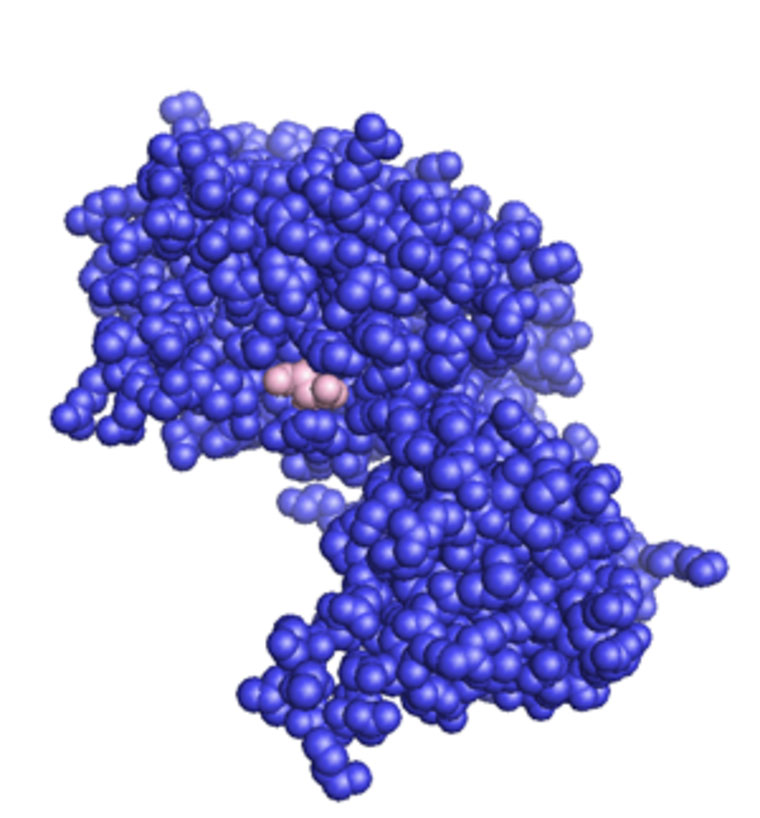Differential Gene Expression Aids Disseminated Tumor Cells Adapt to Diverse Microenvironments
By LabMedica International staff writers
Posted on 10 Nov 2015
A recent paper described how cancer cells that have broken away from a primary tumor are able to establish the conditions they need to survive in a distant site that possesses a quite different microenvironment.Posted on 10 Nov 2015
Investigators at the University of Notre Dame (South Bend, IN, USA) and at the University of Texas MD Anderson Cancer Center (Houston, USA) reported in the October 19, 2015, online edition of the journal Nature that the ability of disseminated tumor cells to establish themselves in distant locations was dependent on expressing or silencing the tumor suppressor gene PTEN.

Image: A space-filling model of the PTEN protein (blue) complexed with tartaric acid (brown) (Photo courtesy of Wikimedia Commons).
PTEN (phosphatase and tensin homolog) is one of the most commonly lost tumor suppressors in human cancer. During tumor development, mutations and deletions of PTEN occur that inactivate its enzymatic activity leading to increased cell proliferation and reduced cell death. Frequent genetic inactivation of PTEN occurs in glioblastoma, endometrial cancer, prostate cancer, and reduced expression is found in many other tumor types such as lung and breast cancer. When the PTEN enzyme is functioning properly, it acts as part of a chemical pathway that signals cells to stop dividing and causes cells to undergo programmed cell death (apoptosis) when necessary. These functions prevent uncontrolled cell growth that can lead to the formation of tumors. There is also evidence that the protein made by the PTEN gene may play a role in both cell movement and adhesion of cells to surrounding tissues.
The investigators found that both human and mouse tumor cells with normal expression of PTEN lost expression of this gene after dissemination to the brain, but not to other organs. The PTEN level in PTEN-loss brain metastatic tumor cells was restored after leaving the brain microenvironment. This brain microenvironment-dependent, reversible PTEN messenger RNA and protein downregulation was epigenetically regulated by microRNAs from brain astrocytes.
Astrocyte-derived exosomes mediated an intercellular transfer of PTEN-targeting microRNAs to metastatic tumor cells, while astrocyte-specific depletion of PTEN-targeting microRNAs or blockade of astrocyte exosome secretion rescued the PTEN loss and suppressed brain metastasis in vivo. This adaptive PTEN loss in brain metastatic tumor cells led to an increased secretion of the chemokine CCL2, which recruited myeloid cells that reciprocally enhanced the outgrowth of brain metastatic tumor cells via enhanced proliferation and reduced apoptosis.
Contributing author Dr. Siyuan Zhang, professor of cancer research at Notre Dame University, said, "The microenvironment has tremendous impact on how the gene is expressed, what type of gene will be expressed. It is definitely not due to genetic mutation. The point of this paper is we should not overlook the huge influence of the tissue architecture, the tissue environment, the tissue composition. It is a dynamic process."
Related Links:
University of Notre Dame
University of Texas MD Anderson Cancer Center







 Analyzer.jpg)






